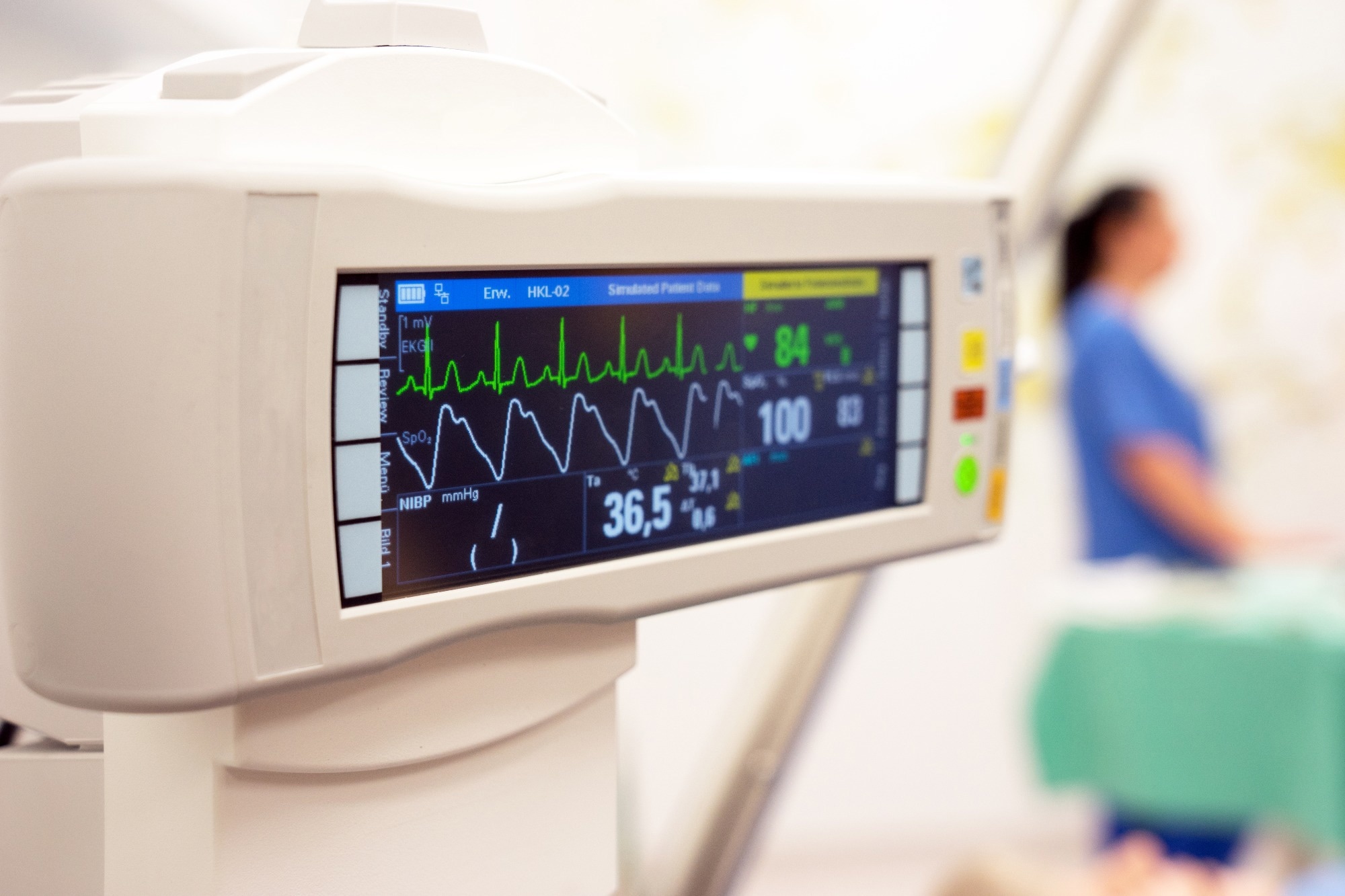In a paper published in the journal PLOS DIGITAL HEALTH, researchers introduced two independent gradient-boosting regression models for predicting intensive care unit (ICU) ventilation duration based on common ICU features. These models achieved low mean absolute errors (MAE): 2.08 days for invasive ventilation and 0.36 days for non-invasive ventilation when trained on 2.6 million patient stays across 350 US hospitals from 2010 to 2019.
 Study: Precision Ventilation Predictions Using Machine Learning: A Leap Forward in ICU Care. Image credit: PhotographyByMK/Shutterstock
Study: Precision Ventilation Predictions Using Machine Learning: A Leap Forward in ICU Care. Image credit: PhotographyByMK/Shutterstock
The total ventilation duration prediction had an MAE of 2.38 days, outperforming the Acute Physiology and Chronic Health Evaluation (APACHE) method with an MAE of 3.02 days. Feature importance analysis revealed factors associated with longer ventilation durations for each method.
Introduction
Mechanical ventilation is a critical intervention in ICUs but deciding on the right strategy can be challenging. Machine learning (ML) models have been used to predict ventilation duration and other outcomes, but existing models mainly focus on total ventilation duration without distinguishing between invasive and mask ventilation. Utilizing one of the largest cross-country ICU databases allows these models to offer a more nuanced approach to ventilation management. This enables better patient care quality, resource allocation, and comprehensive benchmarking of ventilation practices across healthcare institutions.
Proposed Method
Study Overview and Data: This study focuses on developing two ML models to predict the total duration of both invasive and non-invasive positive pressure ventilation (NIPPV) for patients in the ICU. The research process involved the extraction of patient data, feature definition and extraction, model training, and performance evaluation. The study utilized patient data from the Philips eICU Research Institute database. This database encompassed 3.8 million de-identified ICU patient stays across 350 US-based hospitals from 2010 to 2019. Importantly, this research was considered exempt from Institutional Review Board (IRB) oversight due to its retrospective design and the de-identified nature of the database under Health Insurance Portability and Accountability Act (HIPAA) regulations.
Data Processing, Model Development, and Evaluation: The application of specific criteria during the data processing phase led to the exclusion of certain conditions. This exclusion ultimately resulted in datasets comprising 2.6 million patient stays for both the invasive and mask ventilation models. The datasets were subsequently partitioned into training, validation, and internal test cohorts, and an additional external test set was introduced to evaluate the model's generalizability. Demographic characteristics, vital signs, and laboratory measurements served as input features for the models. The ML framework chosen for model development was gradient-boosting regression, implemented via the XGboost package in Python. The models were trained on the training set, with hyperparameter tuning performed using the validation set. The assessment of model performance involved utilizing the mean absolute error (MAE). The comparison of the new models with predictions from the existing APACHE IVa and APACHE IVb models included an evaluation of feature importance through the use of SHapley Additive exPlanations (SHAP) values.
Experimental Results and Model Performance
This study's findings reveal important insights into the prediction of ventilation duration in critical care settings. The cohort characteristics demonstrated variations between patients who received invasive and mask ventilation, with differences in duration and ICU mortality rates. The study period witnessed a slight decrease in the duration of both ventilation types, with a more noticeable reduction observed in the case of invasive ventilation. Furthermore, the prevalence of non-invasive ventilation increased over time, indicating shifting trends in clinical practice.
The performance evaluation of the developed model measured by MAE showed a promising result. The MAE for invasive ventilation varied between 1.88 and 2.10 days across different datasets, whereas for mask ventilation, it ranged from 0.36 to 0.49 days. The combination of the two models also significantly outperformed existing APACHE IVa and APACHE IVb models in predicting total ventilation duration.
Clinical Implications and Future Considerations
This study's significance lies in its potential to enhance the quality of patient care, resource allocation, and clinical decision-making in the context of mechanical ventilation. The improvement in predicting ventilation duration with greater accuracy can empower healthcare institutions in benchmarking their practices and optimizing resource utilization.
The research leverages a diverse dataset by enhancing the model's accuracy and generalizability. However, it is crucial to validate the model's performance in non-US data and for specific patient groups, such as coronavirus disease 2019 (COVID-19) patients. Additionally, monitoring the model's performance over time is essential to detect any changes in data patterns or biases. This work represents a significant step toward improving mechanical ventilation management, with potential applications in real-time clinical support and resource planning.
Conclusion
To summarize, this study introduced two ML models for predicting the duration of both invasive and non-invasive mechanical ventilation. The model, based on extensive data from a diverse range of US hospitals that included APACHE IVa and IVb, also exhibited superior performance in comparison to existing models. These models offer valuable retrospective benchmarking capabilities for hospitals, and future research should explore their potential as prospective clinical decision support tools for critically ill patients requiring mechanical ventilation.